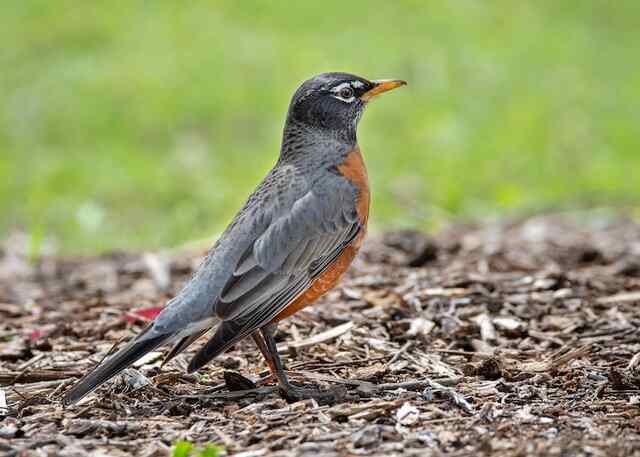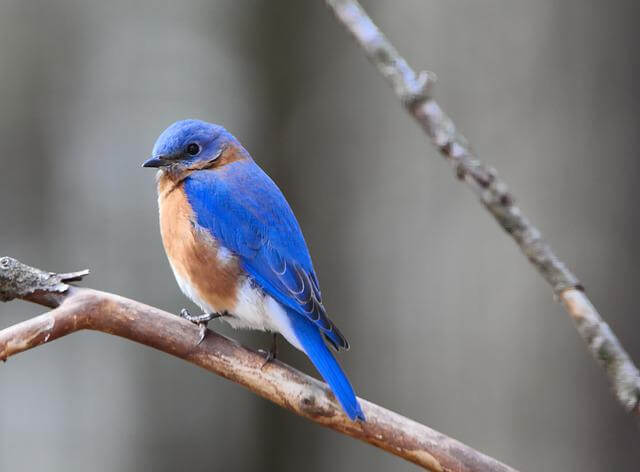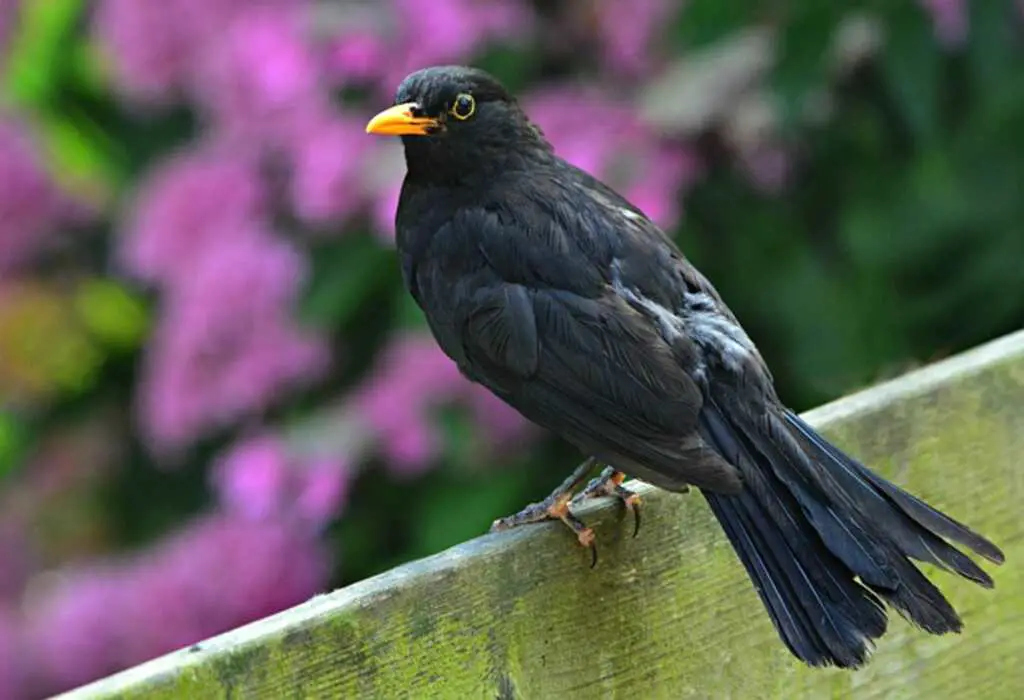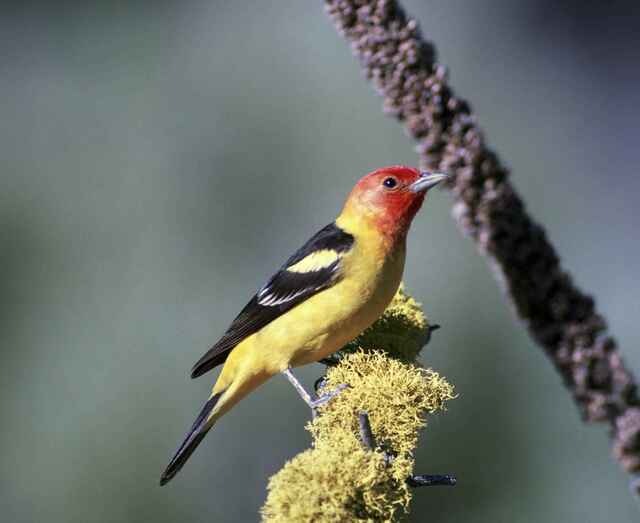Birds are fascinating creatures with unique behaviors that can leave us in awe. One such behavior that often catches our attention is tail feather shaking. Have you ever wondered why birds shake their tails? In this section, we will explore the reasons behind this behavior and its significance in bird communication.
Table of Contents
- 1 Key Takeaways
- 2 Why Do Birds Shake Their Tail Feathers?
- 3 Understanding Bird Tail Movements
- 4 Functions of Bird Tail Feathers
- 5 The Significance of Tail Feather Shaking
- 6 Tail Feather Signals in Bird Communication
- 7 Tail Feather Shaking and Courtship Displays
- 8 Tail Feathers and Dominance Displays
- 9 Tail Feather Shaking as a Defensive Mechanism
- 10 Tail Feather Shaking and Feeding Behavior
- 11 Other Factors Influencing Tail Feather Shaking
- 12 Studying Bird Tail Feathers: Research and Observations
- 13 Conclusion
- 14 FAQs:
- 14.1 What is the significance of bird tail movements?
- 14.2 What is a rouse?
- 14.3 Do all bird species shake their tail feathers?
- 14.4 How can I differentiate between different types of tail feather movements in birds?
- 14.5 Can tail feather shaking indicate the health or well-being of a bird?
- 14.6 Are there any specific tail feather movements associated with attracting mates?
- 14.7 How can I encourage birds to visit my backyard and observe their tail feather movements?
- 14.8 Are there any risks associated with excessive tail feather shaking in birds?
- 14.9 Can tail feather shaking in birds be mimicked or imitated by humans?
- 14.10 Are there any cultural or symbolic meanings associated with bird tail feather shaking?
- 15 Author
Key Takeaways
- Bird tail feather shaking is a common behavior that serves multiple functions.
- Birds use their tail feathers as a primary means of communication and as part of their body language.
- Tail feather shaking can indicate a bird’s intentions, emotional state, social status, and reproductive fitness.
- Scientists have conducted extensive research and observations to understand the intricacies of bird tail feathers and their shaking behavior.
- By studying bird behavior and communication, we can gain a deeper appreciation for the fascinating world of birds.

Why Do Birds Shake Their Tail Feathers?
Birds shake their tail feathers for a variety of reasons, including communication, balance, and grooming. In terms of communication, shaking their tail feathers can be a way for birds to signal to other birds their intentions or emotions, such as aggression or excitement.
Additionally, birds use their tails to maintain balance during flight or perching, and shaking their tail feathers can help them adjust their weight and position. Finally, birds may shake their tail feathers as a form of grooming, to remove dirt or parasites from their feathers and keep themselves clean and healthy.
Understanding Bird Tail Movements
Birds are remarkable creatures that use various means to communicate their intentions and behavior. Among one of their primary modes of communication is through tail movements. Tail feather shaking, in particular, is a common behavior observed in birds of different species.
By observing the nuances of bird tail movements, we can gain insight into their body language and communication patterns. Tail feathers are also crucial in a bird’s balance and steering during flight.
Some common tail movements and gestures that birds exhibit include:
“Flicking” of the tail: a quick, upward movement of the tail that can be a sign of alertness or agitation.
Wagging of the tail: a side-to-side movement that often signals playfulness or excitement.
Raising and lowering of the tail: a movement that can indicate submission or aggression, depending on the context.
Overall, understanding bird tail movements is crucial in interpreting their behavior and body language. It allows us to better appreciate the intricacies of bird communication and the fascinating world of avian species.
Functions of Bird Tail Feathers
Bird tail feathers serve numerous and crucial functions beyond their primary use in flight. These feathers play a significant role in bird behavior and communication. Here are some key functions of bird tail feathers:
| Function | Description |
|---|---|
| Balance and steering | The tail feathers assist birds in maintaining balance and stability while in flight, especially during sharp turns and sudden maneuvers. |
| Attracting mates | Tail feathers play a crucial role in courtship displays among many bird species, with males displaying their tail feathers in an elaborate and colorful fashion to attract potential mates. |
| Displaying dominance | Tail feathers can indicate social status and help birds establish hierarchies within their groups. Dominant birds often display their tail feathers more prominently and aggressively than submissive ones. |
| Thermoregulation | Tail feathers can help birds regulate their body temperature by trapping or releasing heat, depending on the weather conditions. |
| Stabilization during landing | Tail feathers assist birds in slowing down and stabilizing their bodies during landing, preventing injuries and ensuring a safe landing. |
Overall, bird tail feathers are multi-functional and an essential part of bird behavior and communication. By understanding their functions and significance, we can gain valuable insights into the fascinating world of birds.
The Significance of Tail Feather Shaking
Tail feather shaking is a common behavior observed in birds, and it serves as an important means of communication. When a bird shakes its tail feathers, it can convey a variety of messages to others of its species, from signaling aggression to expressing excitement.
One of the primary reasons birds shake their tail feathers is to indicate their current mood or emotional state. Rapid or vigorous shaking is often associated with excitement or anticipation, while slower movements may indicate calmness or contentment.
Birds may also shake their tail feathers as a warning to other birds, particularly when they feel threatened or want to claim territory. For example, a bird may shake its tail feathers as a way of warning off a potential predator or competitor.
In some cases, tail feather shaking can even serve as a form of deception. Some bird species are known to shake their tails when they are trying to trick others into thinking they are stronger or more dominant than they actually are.
The specific movements and patterns of a bird’s tail feathers during shaking can also convey important messages. For example, a bird may fan out its tail feathers to make itself appear larger and more intimidating, or it may flick its tail feathers rapidly as a way of showing aggression. Meanwhile, a slow, deliberate wagging of the tail feathers can signal submission or a desire to mate.
Overall, tail feather shaking is a complex and versatile behavior that plays an important role in bird communication. By understanding the various movements and messages associated with this behavior, we can gain a deeper appreciation for the fascinating world of avian behavior.
Tail Feather Signals in Bird Communication
Birds have a complex system of communication that involves a variety of visual and auditory signals. Tail feathers play an important role in conveying messages and signals to other birds. By understanding the different tail feather positions, patterns, and movements, we can gain insights into the behavior and intentions of birds.
One common tail feather signal is the “tail flick,” where the bird rapidly moves its tail up and down. This signal can indicate agitation or irritation and is often observed in birds that feel threatened or uncomfortable in their environment.
Another signal is the “tail spread,” where the bird fans out its tail feathers to display its size and dominance. This behavior is often seen in male birds during courtship displays and can also be used to establish social hierarchies within a group.
The “tail flicker” is a rapid, side-to-side movement of the tail feathers that can signal excitement or arousal. This behavior is often observed in birds that are preparing to mate or capture prey.
Some birds also use their tail feathers to signal danger or warning to others. For example, the “tail wag” is a slow side-to-side movement that can indicate the presence of a predator or other threat.
Overall, tail feather signals are an important part of bird communication and behavior. By carefully observing and interpreting these signals, we can gain a better understanding of the complex social dynamics and interactions of these fascinating creatures.
Tail Feather Shaking and Courtship Displays
Birds use their tail feathers to communicate various messages, including signals for attracting a mate. Tail feather shaking is a common behavior observed during courtship displays among many bird species. Male birds may shake their tail feathers rapidly to draw attention to their bright colors and distinctive patterns, which can indicate genetic fitness and reproductive health to potential mates.
Female birds may also use tail feather shaking as a way to assess the suitability of a male partner. By observing the intensity and duration of a male’s tail shaking behavior, a female bird can gauge his energy levels and overall health status.
During courtship displays, birds may also engage in synchronized tail feather shaking, which serves to strengthen the bond between partners. This behavior reinforces the pair’s social connection and can also serve to deter potential rivals.
Scientists have conducted studies on the correlation between tail feather shaking and reproductive success in many bird species. These studies have found that males with more vigorous and frequent tail shaking behavior tend to have higher chances of mating success and producing healthy offspring.

Tail Feathers and Dominance Displays
Birds use their tail feathers to communicate social status and establish dominance within their groups. Tail feather shaking is often observed during these displays, with the movements and fluttering indicating the bird’s level of dominance.
In some bird species, such as peacocks and turkeys, males will display their ornate and colorful tail feathers during courtship rituals to attract mates and establish their reproductive fitness.
During aggressive interactions, such as territorial disputes, birds may also use their tail feathers to intimidate and establish dominance over their rivals. The movements and positions of the tail feathers can convey specific messages to other birds, indicating submission or aggression.
Tail Feathers and Hierarchies
Within a flock or group of birds, dominance hierarchies can form, with certain individuals holding higher social status than others. Tail feather shaking plays a crucial role in these hierarchies, with dominant birds often exhibiting more pronounced and extravagant tail movements.
Some bird species, such as chickens, will even peck at the tail feathers of their lower-ranked counterparts as a form of aggression and to establish their dominance.
Overall, tail feather shaking and movements are crucial in bird communication, helping birds establish and maintain social hierarchies and communicate their intentions to others within their group.
Tail Feather Shaking as a Defensive Mechanism
While tail feather shaking is often associated with communication and displays, it can also serve as a defensive mechanism for birds. When threatened, birds may rapidly shake their tail feathers as a warning to potential predators.
This movement can have multiple functions, including making the bird appear larger and more intimidating, as well as drawing attention away from their vulnerable areas, such as their head or nest. This defensive behavior is especially common in ground-nesting birds, which must protect their eggs and young from a variety of predators.
In some cases, tail feather shaking may also be used to distract predators while the bird makes its escape. This behavior can be observed in some species of quails and grouse, which will feign injury by vigorously shaking their tail feathers and leading a predator away from their nesting site.
It is important to note that not all birds use tail feather shaking as a defensive mechanism, and some species may have different behaviors to deter predators. For example, birds of prey often use their sharp talons or beaks to fend off attackers.
Tail Feather Shaking and Feeding Behavior
Along with communication and courtship, tail feather shaking can also be observed in the feeding behavior of certain bird species. This behavior assists birds in foraging and capturing prey. For example, some hawks and falcons shake their tails to flush out small mammals or birds from their hiding places. They then use their sharp talons to capture them mid-flight.
Other birds, such as woodpeckers, use their tail feathers as a support mechanism while foraging for insects on tree trunks. They stabilize themselves by pressing their tail feathers against the trunk and then use their sharp beaks to dig into the bark to access the insects.
Overall, tail feather shaking during feeding behavior highlights the adaptability and versatility of birds in using their physical traits for survival and sustenance.

Other Factors Influencing Tail Feather Shaking
While tail feather shaking is primarily a means of communication and behavior among birds, there are several other factors that can influence this behavior.
Environmental factors such as wind and rain can play a role in tail feather shaking, as birds may use their tails to maintain balance or stabilize themselves during flight or perching. Additionally, the breeding season can also influence tail feather shaking, as birds may use this behavior to signal their reproductive fitness to potential mates.
Individual bird characteristics such as age and sex can also impact tail feather shaking. For example, younger birds may exhibit more vigorous tail movements as they learn to communicate and establish their place within their social groups. Similarly, males of certain bird species may use tail feather shaking more frequently during courtship displays and dominance contests.
Overall, tail feather shaking is a complex behavior that is influenced by a variety of factors. By studying these influences and observing bird behavior in various contexts, we can gain a deeper understanding of avian communication and behavior.
Studying Bird Tail Feathers: Research and Observations
The study of bird behavior and communication has been a subject of interest for scientists and enthusiasts alike. Researchers have conducted extensive observations and experiments to understand the role of tail feathers in bird communication and behavior.
One notable study conducted by researchers at the University of California, Berkeley, found that tail feather shaking in birds serves as a form of visual communication, allowing birds to convey specific messages to their conspecifics. The researchers observed that certain tail movements, such as rapid side-to-side shaking, were used to signal aggression or territoriality, while slow and deliberate movements were associated with courtship and mate attraction.
Another study, conducted by researchers at the University of Oxford, explored the role of iridescence in tail feathers and how it influences bird communication. The study found that male birds with more iridescent tail feathers were more attractive to females and had greater reproductive success, highlighting the importance of tail feather displays in mate selection.
Observations of bird behavior in natural habitats have also provided valuable insights into the significance of tail feather shaking. For example, in certain bird species, tail feather shaking has been observed during feeding behavior, with birds using the movement to dislodge insects or seeds from their surroundings.
Overall, research and observations have shed light on the intricacies of bird behavior and communication, with tail feather shaking playing a crucial role in these aspects. Further studies in this field can contribute to a deeper understanding of avian behavior and enhance our appreciation for the fascinating world of birds.
Conclusion
The shaking of tail feathers is a crucial component of bird behavior and communication. Through extensive research and observation, we have gained insights into the various functions and meanings behind this behavior. From courtship displays to defensive mechanisms, birds use their tail feathers to convey important messages to other birds and their environment.
Understanding the intricacies of bird behavior and communication can enhance our appreciation for these fascinating creatures and the role they play in our ecosystem. By observing and studying bird tail feathers, we can continue to unlock the mysteries of avian behavior and deepen our connection with the natural world.

FAQs:
What is the significance of bird tail movements?
Bird tail movements serve as a form of communication and expression of their intentions and emotions. Different tail movements can convey messages to other birds, signaling aggression, courtship, or submission.
What is a rouse?
In birding terminology, a rouse refers to the act of a bird fluffing up its feathers. This is often done as a way to regulate body temperature by trapping warm air close to the body. However, birds may also rouse their feathers as a form of communication, to appear larger and more intimidating to potential predators or rivals. Additionally, some birds may rouse their feathers as part of a courtship display, to appear more attractive to potential mates.
Do all bird species shake their tail feathers?
While tail feather shaking is a common behavior observed in many bird species, not all birds exhibit this specific movement. The frequency and purpose of tail feather shaking can vary among different bird species.
How can I differentiate between different types of tail feather movements in birds?
Understanding bird body language and tail feather movements can be challenging but important for interpretation. Observing the context, pattern, and duration of tail movements can help differentiate between different behaviors, such as courtship displays, aggression, or feeding behavior.
Can tail feather shaking indicate the health or well-being of a bird?
Tail feather shaking alone cannot be used as a sole indicator of a bird’s health or well-being. However, excessive or abnormal tail feather shaking, along with other observable signs, may indicate potential health issues or stress in birds.
Are there any specific tail feather movements associated with attracting mates?
Yes, tail feather movements often play a significant role in courtship displays among birds. Vibrant and synchronized tail feather shaking or fanning can attract potential mates and signal reproductive fitness.
How can I encourage birds to visit my backyard and observe their tail feather movements?
Creating a bird-friendly environment in your backyard with appropriate feeding stations, water sources, and native plants can attract birds. By providing a natural habitat, you can increase the likelihood of observing different bird species and their behaviors, including tail feather movements.
Are there any risks associated with excessive tail feather shaking in birds?
Excessive or continuous tail feather shaking in birds may lead to feather wear and tear. Additionally, birds that constantly engage in aggressive tail feather shaking may be more prone to injuries or accidents due to distraction or reduced awareness of their surroundings.
Can tail feather shaking in birds be mimicked or imitated by humans?
While humans may try to imitate certain bird movements, including tail feather shaking, it is important to remember that birds have evolved specific anatomical structures and behaviors for their own purposes. Attempting to mimic bird tail feather shaking may not accurately convey the same messages or meanings to other birds.
Are there any cultural or symbolic meanings associated with bird tail feather shaking?
In various cultures, birds and their behaviors, including tail feather shaking, can hold symbolic meanings associated with communication, freedom, and spirituality. However, these interpretations can vary widely across different cultural and historical contexts.



